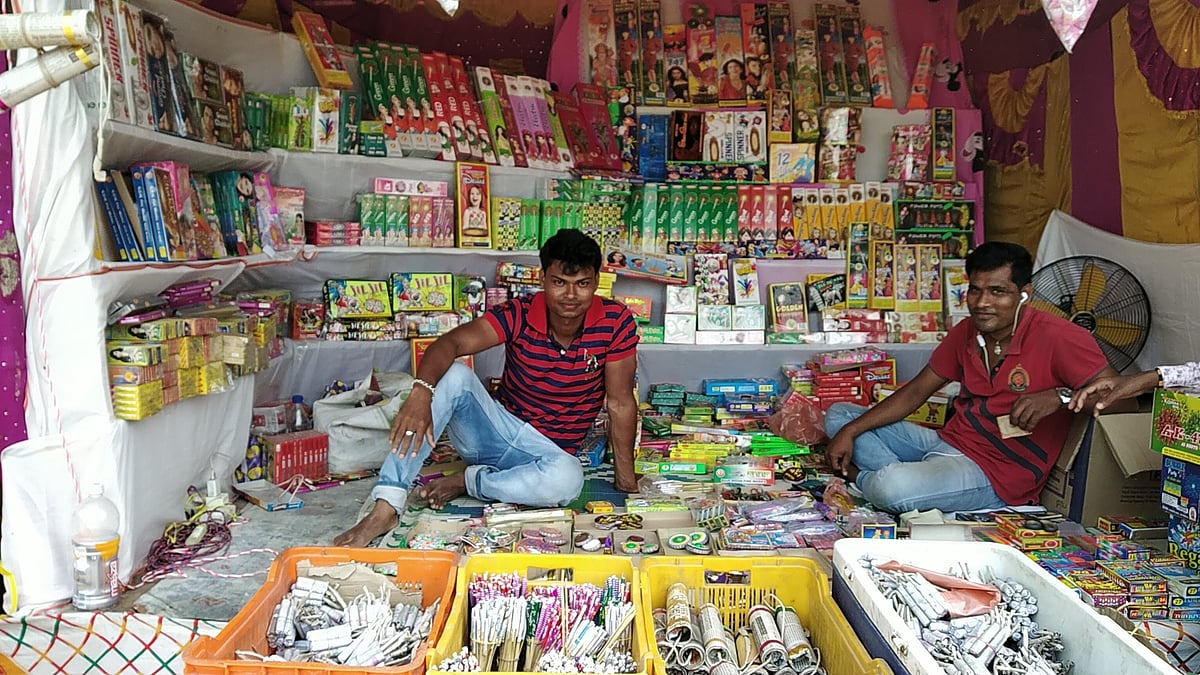Environment
Who’s to judge? Non-green firecrackers sold openly in Delhi despite ban
Fear of judge, jury and executioners — or for one’s own lungs — seem to have gone up in smoke as the usual Diwali frenzy grips the market

Even as Delhi-NCR awaits the Supreme Court’s final verdict on how many and what sort of firecrackers will be allowed this Diwali — the apex court has indicated that a complete ban might not materialise — the festive scene in the national capital’s markets carries on crackling, per reports in several national dailies.
Despite a blanket ban on the manufacture, sale, storage and use of firecrackers, they are being openly sold across several parts of the city, according to a report by Hindustan Times, which took stock of markets around Chandni Chowk, Jama Masjid and Sadar Bazaar.
The loud bangs from the firecrackers have already raised the decibels across NCR, with numerous incidents reported last week, as confirmed by several RWAs (Residents’ Welfare Associations).
Last week, the Supreme Court reserved its verdict on petitions from cracker manufacturers challenging the permanent ban. The Centre has recommended restricting sales to licensed traders and barring online platforms from facilitating sales in Delhi-NCR.
The lively lanes of Sadar Bazaar witnessed an outpouring of Diwali shoppers on 12-13 October, Sunday and Monday, many discreetly enquiring and purchasing firecrackers. At least 10 vendors were spotted — including three on the main road — selling packets of bombs and sparklers... often hidden under tables or behind sweets cartons.
A 19-year-old street vendor said on condition of anonymity, “We don’t display the big crackers; they are kept under the table. But if someone asks for them, then we sell them discreetly.”
The vendor, who also works in various other shops, claimed that his Diwali earnings in these two days has surpassed a month of normal work.
According to him, the 15-odd vendors in the area make between Rs 50,000 and Rs 4 lakh daily on pre-Diwali weekends, collectively earning over Rs 30 lakh through the festive period.
Published: undefined
On Sunday, these vendors went largely unnoticed by the Delhi Police officers managing the marketplace crowds and traffic.
Another vendor was quoted as saying, “Yesterday, the police caught me selling crackers and kept me at the station for few hours before releasing.”
This vendor further explained how the ban on big manufacturers creates a market for small-scale sellers.
“We buy the stock from wholesalers, who can’t sell directly because of the ban. We sell it with a margin of 50-60 per cent,” he said, holding up a packet of 'green crackers' priced at Rs 300 — 60 per cent above the original value.
Published: undefined
While shops that used to sell firecrackers at Jama Masjid’s Gate No. 3 remain closed, children and their parents walked the market with crackers bought elsewhere. Street vendors openly sold sparklers, flower pots and light crackers with prices ranging from Rs 200 to Rs 1,000.
“We bought this stock before the ban was imposed. These are just for children,” one vendor said, adding, “You can’t stop children from celebrating Diwali.”
Many established shop owners remained cautious. At Majestic Fire Works Co. in Sadar Bazaar, shutters were half down and shelves mostly empty. The owner said, “We have all kinds of crackers in stock — even the green ones — but not here in the shop. If the court allows, we will start selling after Tuesday (14 October).”
In North Delhi’s Shakti Nagar, smaller shops displayed only ‘kids’ crackers’, such as toy guns or ‘green cracker’ boxes, while some offered regular fireworks on request.
Published: undefined
One owner shared a 22-page PDF catalogue with images of dozens of crackers, saying, “People know us. We don’t display them, but we have everything. Once customers choose from the catalogue, we get the stock from our storehouse.”
RWAs confirmed an increase in firecrackers bursting in homes over the past week. Ashok Bhasin, president of a North Delhi RWA, said, “We’ve been hearing crackers every night. We’ve asked shopkeepers to only sell green crackers if they must, but even those aren’t really available.”
Experts note that ‘green crackers’ remain practically difficult to distinguish from conventional ones and allowing them might undermine the ban’s effectiveness.
A blanket ban was first imposed in 2017 by the Supreme Court to tackle air pollution and safeguard public health. Though green crackers were permitted between 2018 and 2020, annual blanket bans since 2020 acknowledged the enforcement challenges and put the brakes on all sorts. In December 2024, following Supreme Court directives, Delhi expanded the ban to cover the whole year.
Not that the bans made a difference last year (2024) or the year before that either.
Enforcement remains patchy, however much the top court may fume, and Delhi typically suffers hazardous air quality that peaks after the festive seasons.
Still, the court’s verdict on the latest petitions is ‘eagerly awaited’, as the city once more navigates the tension between tradition and environmental concerns — and waits to deflect worries about their impact on the AQI to the stubble burning in fields.
Published: undefined
Follow us on: Facebook, Twitter, Google News, Instagram
Join our official telegram channel (@nationalherald) and stay updated with the latest headlines
Published: undefined